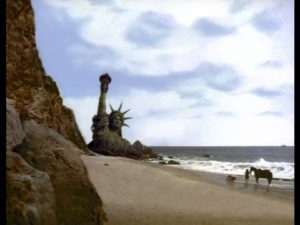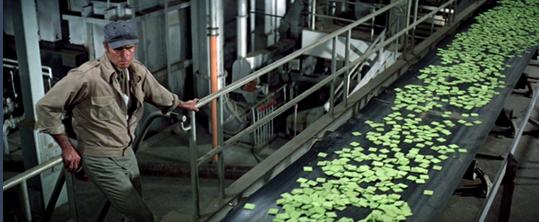Nothing like a sudden turn of the wheel that leaves the audience in disbelief. But what happens when the audience actually disbelieves? Screenwriters are aware of the double edged sword quality of plot twists: they can make a story successful almost by themselves, but can also turn against it if they come off as predictable or implausible.
the wheel that leaves the audience in disbelief. But what happens when the audience actually disbelieves? Screenwriters are aware of the double edged sword quality of plot twists: they can make a story successful almost by themselves, but can also turn against it if they come off as predictable or implausible.
In some genres (horror, thriller) they have become an expected, almost mandatory device. Robert Wiene’s The Cabinet of Dr. Caligari (1920) set the foundations for the use of narrative unreliability in films. And it’s already a great example of a twist that didn’t only aim for shock- it also tried to provide a solid justification for the visual and narrative styles of the film.
 Night Shyamalan’s irregular career illustrates both the rewards and the risks of subjecting the story to a plot twist. The recent success of Split may have brought him to a second youth, but for many years, the ‘Shyamalan twists” served more as a burden than a perk, becoming the smoking gun that proves and defines the film’s failure.
Night Shyamalan’s irregular career illustrates both the rewards and the risks of subjecting the story to a plot twist. The recent success of Split may have brought him to a second youth, but for many years, the ‘Shyamalan twists” served more as a burden than a perk, becoming the smoking gun that proves and defines the film’s failure.
So what makes a good plot twist? If Aristotle stated that good art should be both unexpected and inevitable, contemporary screenwriters like William Goldman have pinpointed a reality that Hollywood has exploited well: that a controversial ending may still work effectively if it’s at least satisfying.
Some examples of films with memorable plot twists are:
(1941) The Maltese Falcon
(1958) Vertigo
(1960) Psycho
(1968) Planet of the Apes
(1973) The Sting
(1973) Soylent Green
(1973) The Wicker Man
(1980) The Empire Strikes Back
(1987) Angel Heart
(1992) The Crying Game
(1995) The Usual Suspects
(1995) 12 Monkeys
(1996) Primal Fear
(1999) The Sixth Sense
(1999) Fight Club
(2000) Memento
(2004) Saw
(2006) The Prestige
(2016) Arrival


You must be logged in to post a comment.